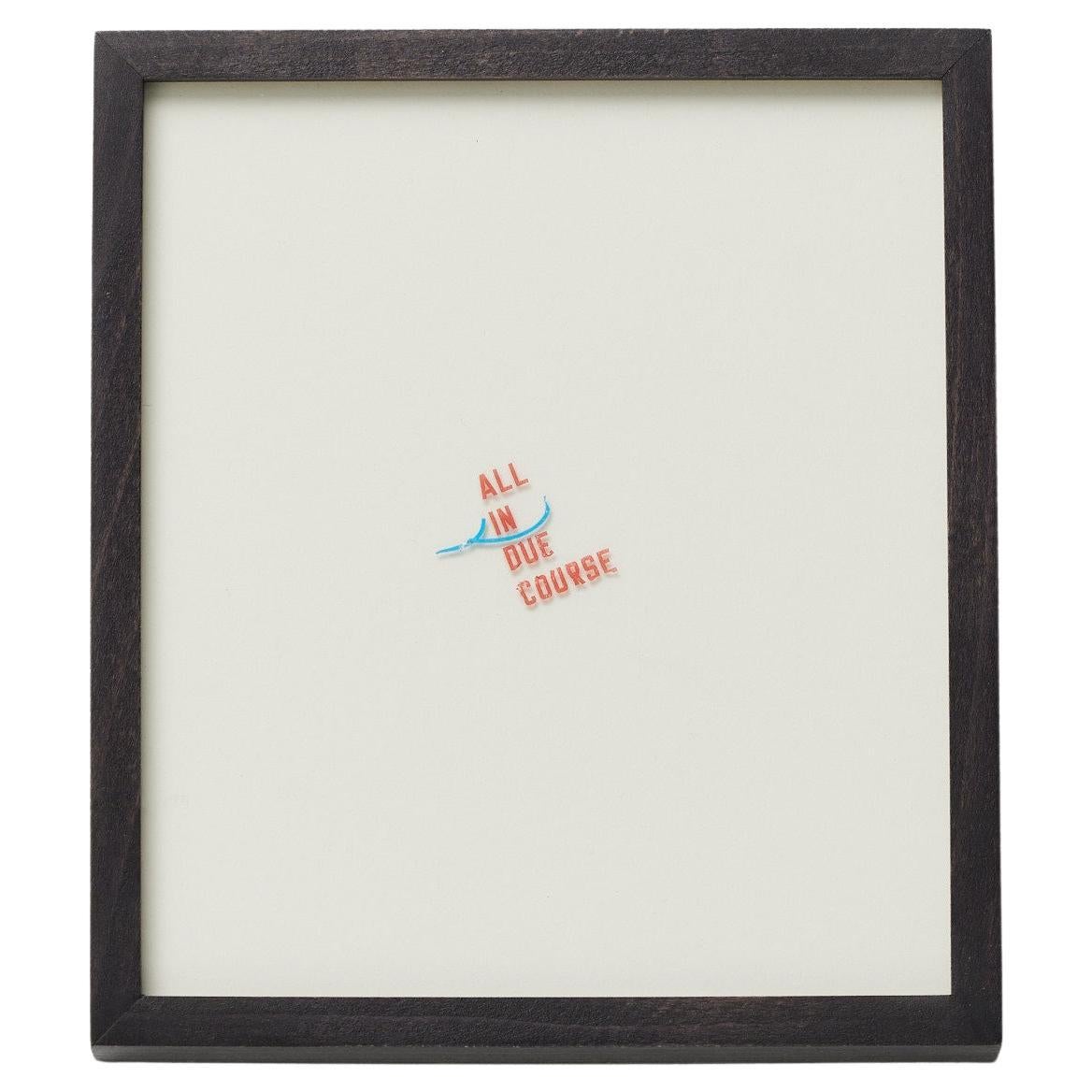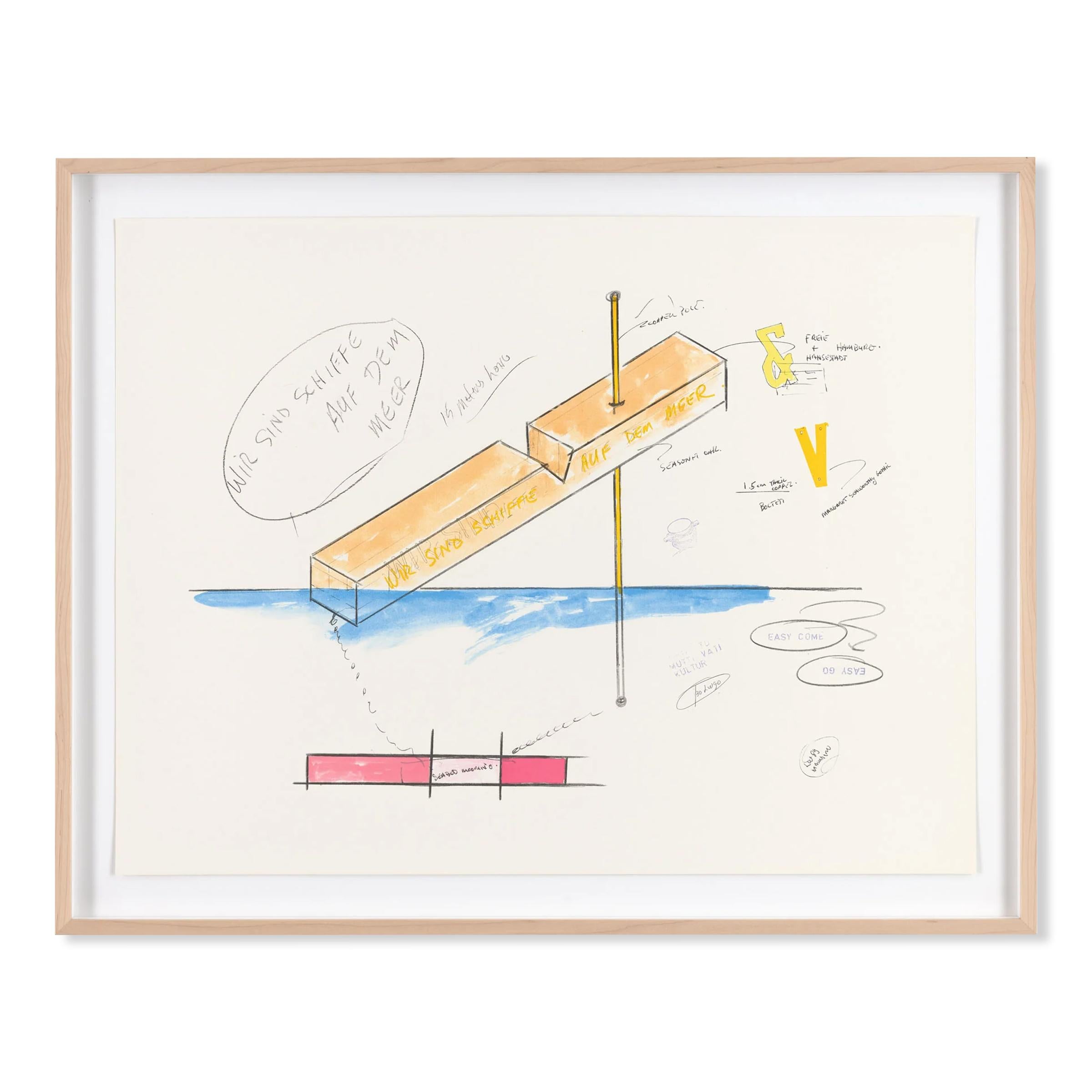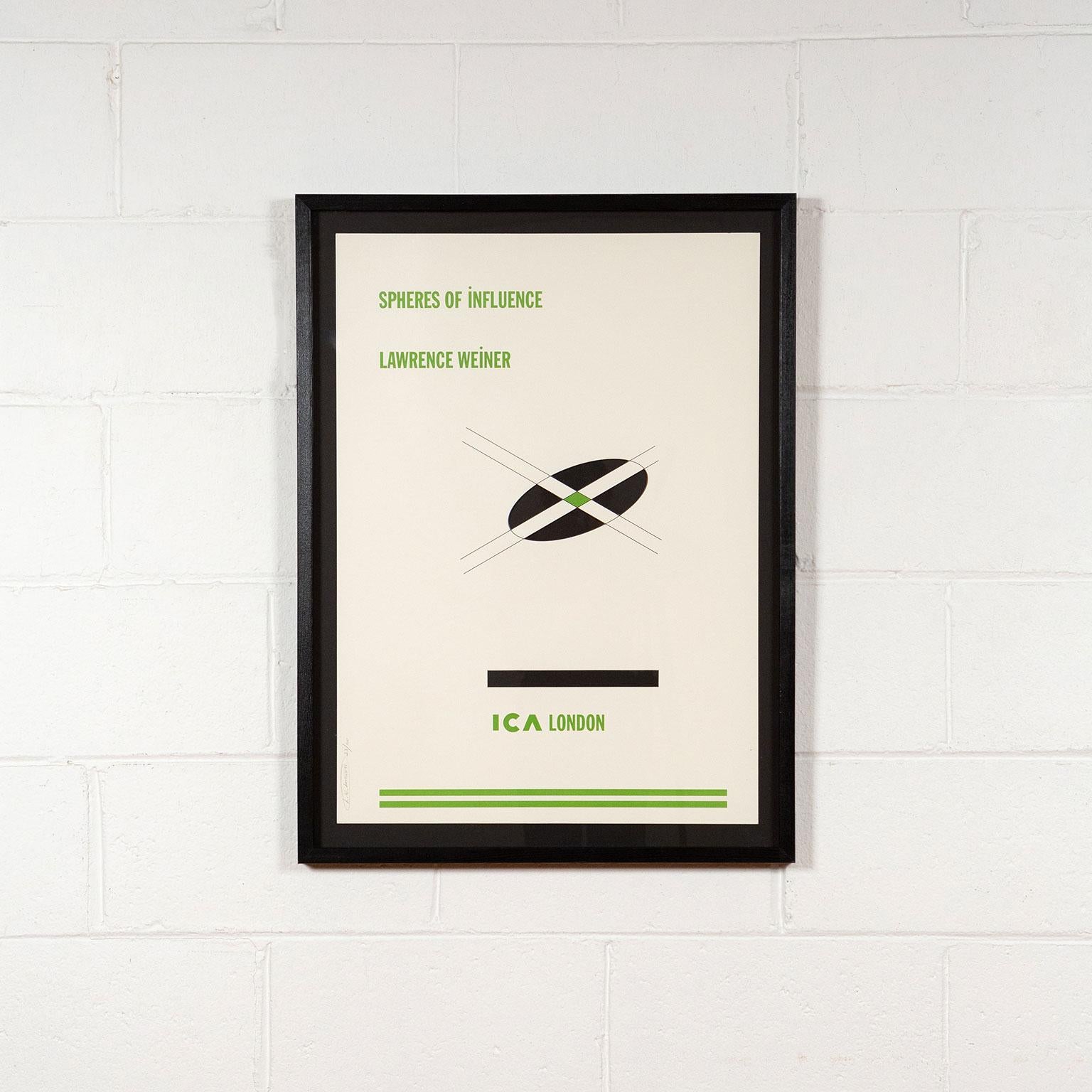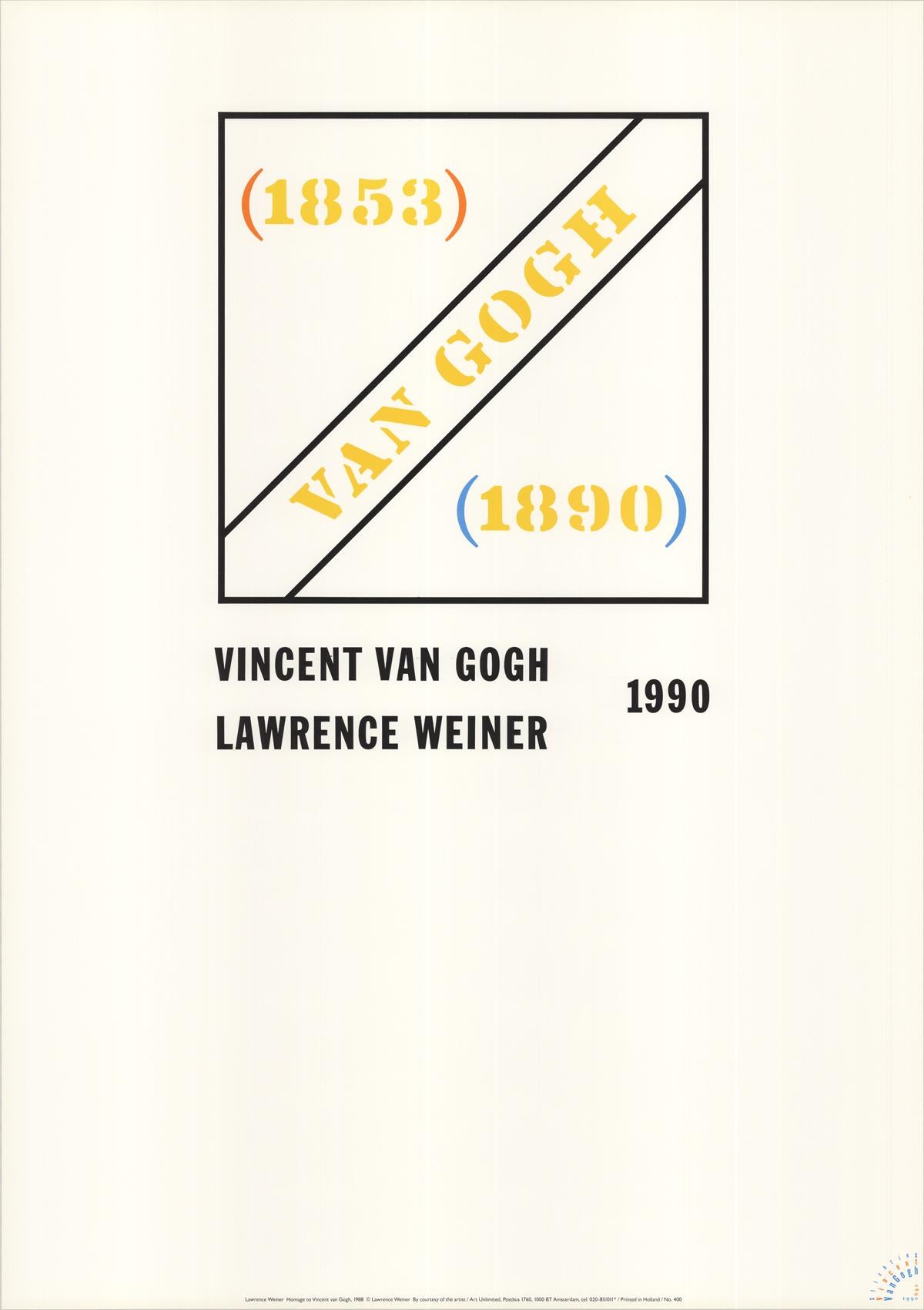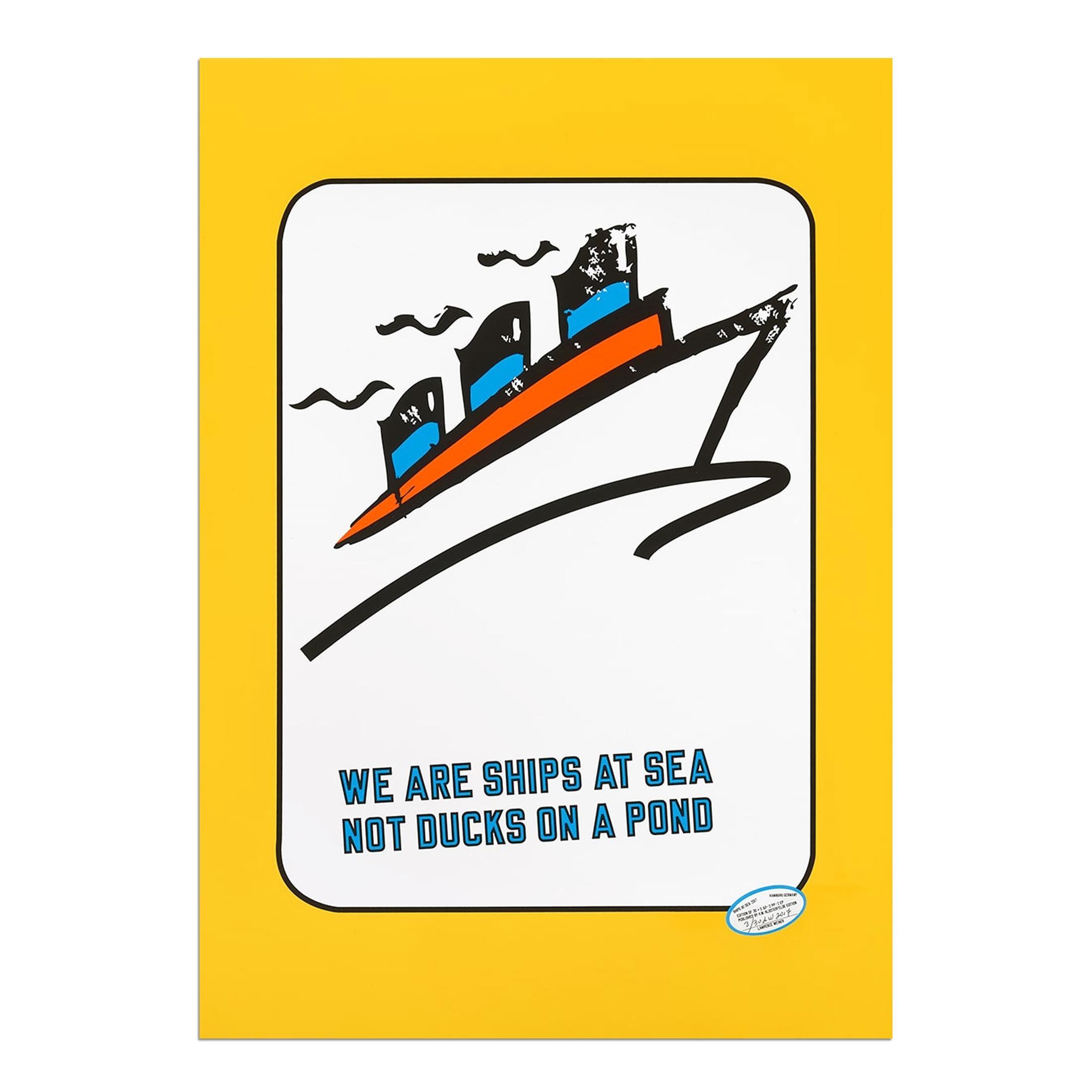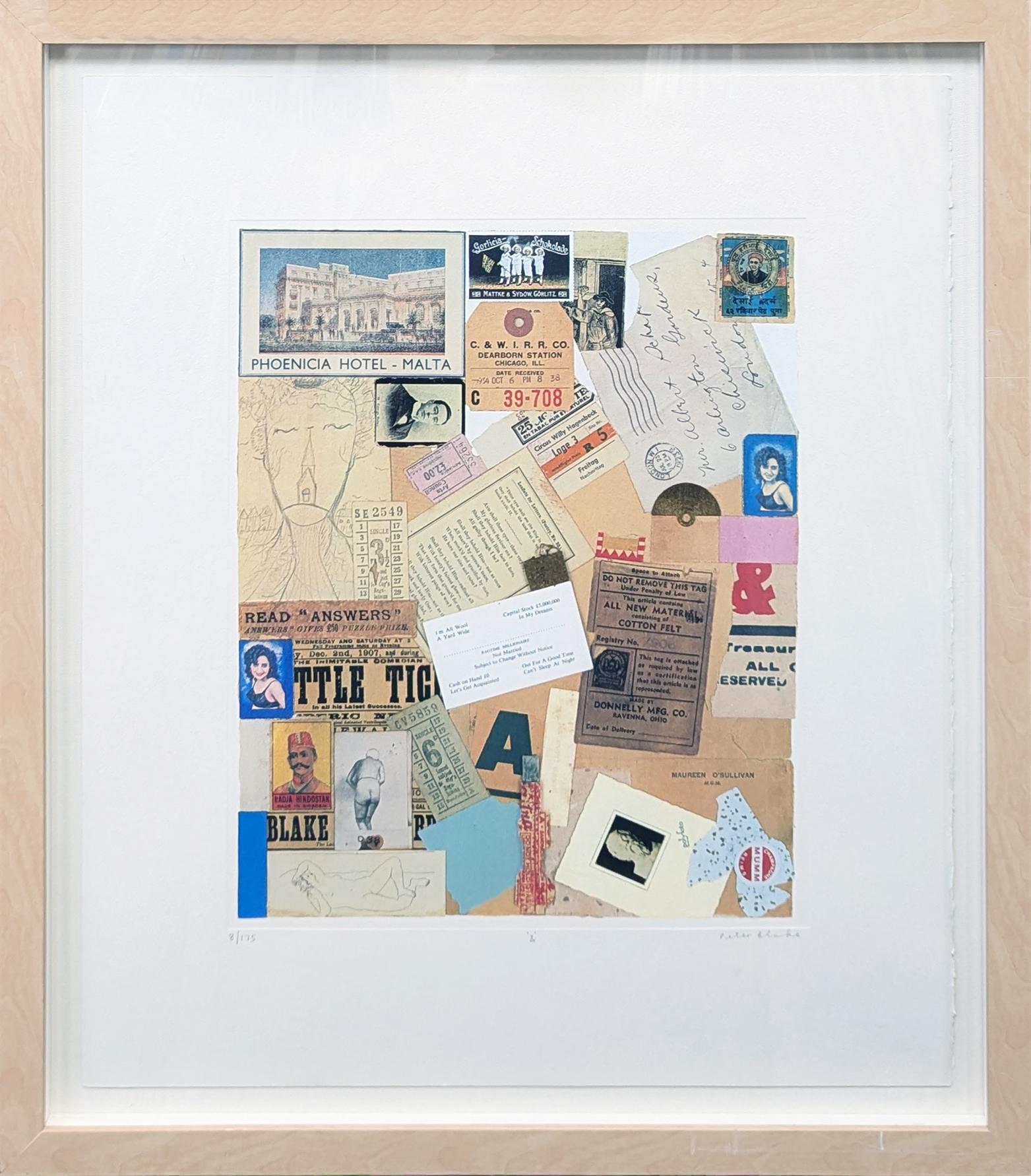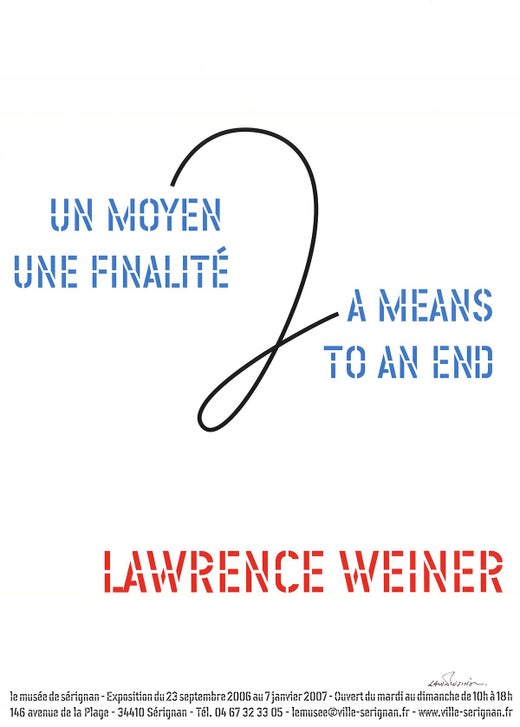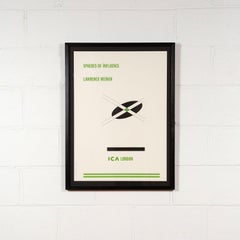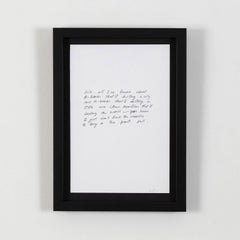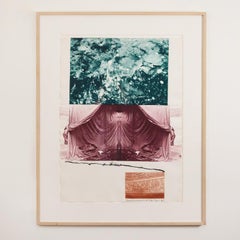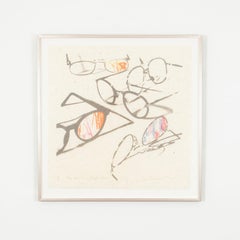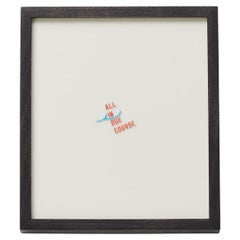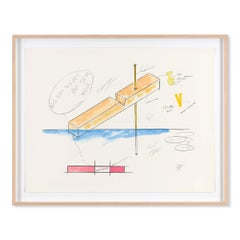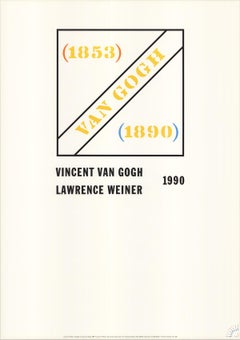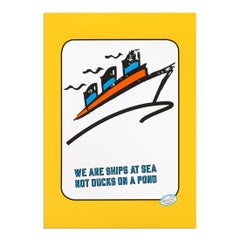Items Similar to Imaginary Realities
Want more images or videos?
Request additional images or videos from the seller
1 of 14
Lawrence WeinerImaginary Realities
$950
$2,00052% Off
£725.32
£1,526.9952% Off
€838.10
€1,764.4252% Off
CA$1,333.62
CA$2,807.6252% Off
A$1,486.46
A$3,129.3952% Off
CHF 779.89
CHF 1,641.8852% Off
MX$18,152.08
MX$38,214.9152% Off
NOK 9,875.15
NOK 20,789.7952% Off
SEK 9,333.52
SEK 19,649.5252% Off
DKK 6,255.12
DKK 13,168.6752% Off
About the Item
Lawrence Weiner (1942-2021) is one of the most-distinctive American conceptual artists.
His philosophy and aesthetic developed concurrently to artists such as Sol LeWitt. Weiner went on to focus on text-based installation projects, typically displayed in public spaces.
Exhibiting at Leo Castelli during the 1970s, Weiner has been an institutional darling with major exhibitions at many of the world's top museums.
As a significant portion of his output is a temporary installation, his multiples (which are few and far between) are sought-after and cherished by collectors.
This print is a paradigm of Weiner's text-based art, utilizing his signature typeface and bright primary colors to give life to his curious multi-lingual message.
As with the best of his work, Weiner incites a collaborative encounter between the art and the viewer, insisting that deep contemplation from the audience is a fundamental aspect of his practice.
Caviar20 has been a long-time fan of Lawrence Weiner - as anyone interested in Jenny Holzer and Barbara Kruger can see the traces of his influence on their work.
"Imaginary Realities"
Color offset lithography on vellum
Signed, numbered, and dated by artist
From an edition of 60
13.5”H 18"W
Framed
Very good condition
- Creator:Lawrence Weiner (1942, American)
- Dimensions:Height: 13.5 in (34.29 cm)Width: 18 in (45.72 cm)
- More Editions & Sizes:Edition of 60Price: $2,000
- Medium:
- Movement & Style:
- Period:
- Condition:Very good condition.
- Gallery Location:Toronto, CA
- Reference Number:Seller: 1-221stDibs: LU21529592842
Lawrence Weiner
Lawrence Weiner was an American artist and a central figure in the genesis of conceptual art, an art movement that made its appearance in the United States in the 1960s. His work is often characterized by the use of typography.
About the Seller
4.8
Vetted Professional Seller
Every seller passes strict standards for authenticity and reliability
Established in 2009
1stDibs seller since 2015
195 sales on 1stDibs
Typical response time: 4 hours
- ShippingRetrieving quote...Shipping from: Toronto, Canada
- Return Policy
Authenticity Guarantee
In the unlikely event there’s an issue with an item’s authenticity, contact us within 1 year for a full refund. DetailsMoney-Back Guarantee
If your item is not as described, is damaged in transit, or does not arrive, contact us within 7 days for a full refund. Details24-Hour Cancellation
You have a 24-hour grace period in which to reconsider your purchase, with no questions asked.Vetted Professional Sellers
Our world-class sellers must adhere to strict standards for service and quality, maintaining the integrity of our listings.Price-Match Guarantee
If you find that a seller listed the same item for a lower price elsewhere, we’ll match it.Trusted Global Delivery
Our best-in-class carrier network provides specialized shipping options worldwide, including custom delivery.More From This Seller
View AllSpheres of Influence
By Lawrence Weiner
Located in Toronto, Ontario
Lawrence Weiner (b. 1942) is one of the most-distinctive American conceptual artists.
His philosophy and aesthetic developed concurrently to Sol LeWitt yet Weiner has focused far more on (text-based) installation - typically in public spaces.
Exhibited at Leo Castelli during the 1970's, Weiner has been an institutional darling with major exhibitions at most of the world's top museums.
As a significant portion of his output is temporary installation, his multiples (which are few and far between) are sought-after and cherished by collectors.
This rare silkscreen was published in conjunction with Weiner's solo exhibition "SPHERES OF INFLUENCE...
Category
1990s Conceptual Prints and Multiples
Materials
Screen
$950 Sale Price
56% Off
A-Bomb
By Richard Prince
Located in Toronto, Ontario
Richard Prince (b. 1949) is one of the most innovative, influential and polemic American artists. Whether you associate him with The Pictures Generation, post-modernism or Appropriat...
Category
1980s Contemporary More Art
Materials
Paper, Ink
Aquafix
By Robert Rauschenberg
Located in Toronto, Ontario
Robert Rauschenberg (1925-2008) is revered as one of the most innovative American pop artists - more avant-garde than Warhol, and more audacious than Jasper Johns.
For much of his p...
Category
1980s Pop Art Figurative Prints
Materials
Etching, Lithograph
My Mind is an Empty Glass
By James Rosenquist
Located in Toronto, Ontario
James Rosenquist (1933-2017) was one of the most important contributors to American Pop Art. He is best known for his monumental collage-style paintings that feature a melange of app...
Category
1990s Pop Art Still-life Prints
Materials
Lithograph
Untitled (for Kennedy)
By Robert Rauschenberg
Located in Toronto, Ontario
Robert Rauschenberg is revered as one of the most innovative American pop artists - more avant-garde than Warhol, more audacious than Jasper Johns.
In addition to his artistic achie...
Category
1990s Pop Art More Prints
Materials
Lithograph
Geometric Mouse
By Claes Oldenburg
Located in Toronto, Ontario
Claes Oldenberg (b.1929) is a Swedish-born American artist, renowned for his contribution to Pop art by way of his iconic soft sculptures and public installations.
In 1962, Oldenburg debuted his revolutionary soft sculptures at the Green Gallery in New York. Three giant, squishy sculptures of an ice cream cone, a hamburger, and a slice of cake, swelled across the gallery floor, forever changing the way we define sculpture. It has been noted that Oldenburg's early work was largely inspired by Yayoi Kusama's hand-sewn phallic-shaped soft sculptures that enveloped the surfaces of ironing boards, sofas, and boats.
Click here to see an exhibition poster featuring a later example of Kusama's soft sculptures.
Ranging from voluminous hamburgers (famously on display at the AGO) to ballistic badminton shuttlecocks, Oldenberg's colossal sculptures replicate commonplace objects on a grand scale, often disrupting the environment they inhibit with curious and playful subtexts. The confrontational nature of Oldenberg's sculptures places an emphasis on the viewer, asking us to reconsider our relationship to these recognizable, but obscure, objects.
"Geometric Mouse...
Category
1960s Pop Art More Prints
Materials
Lithograph
You May Also Like
Framed Lawrence Weiner Limited Edition Artwork, ALL IN DUE COURSE
By Lawrence Weiner
Located in Barcelona, Barcelona
Framed Lawrence Weiner, ALL IN DUE COURSE, limited edition artwork tattoo for the South London Gallery, 2014.
Born in 1942 in the Bronx, New York, Weiner lives and works in New York...
Category
2010s British Post-Modern Contemporary Art
Materials
Paper
$928 Sale Price
55% Off
Free Shipping
Lawrence Weiner, Wir sind keine Enten auf dem Teich - 1990, Signed Print
By Lawrence Weiner
Located in Hamburg, DE
Lawrence Weiner (1942-2021)
Wir sind keine Enten auf dem Teich, wir sind Schiffe auf dem Meer, 1990
Medium: Screenprint on Bistrol card
Dimensions: 35.5 x 70.5 cm (14 x 27.8 in)
Edit...
Category
20th Century Conceptual Figurative Prints
Materials
Screen
Lawrence Weiner Homage to Vincent Van Gogh Vintage
By Lawrence Weiner
Located in Brooklyn, NY
Published by Art Unlimited in Amsterdam in 1990, this work is part of a collaborative celebration of Van Gogh's 100th anniversary, featuring original designs from several renowned ar...
Category
1990s Conceptual Abstract Prints
Materials
Offset
$200 Sale Price
20% Off
Lawrence Weiner, We Are Ships at Sea Not Ducks on a Pond - Signed Print
By Lawrence Weiner
Located in Hamburg, DE
Lawrence Weiner (1942-2021)
We Are Ships at Sea Not Ducks on a Pond, 2017
Medium: Screenprint and luggage sticker on 300g paper
Dimensions: 59.5 x 42 cm (23.4 x 16.5 in)
Edition of 3...
Category
21st Century and Contemporary Post-War Figurative Prints
Materials
Screen
&
By Peter Blake
Located in Aventura, FL
Silkscreen collage on paper. Hand signed, titled and numbered by Peter Blake. From the edition of 175. Image size 19 x 16 inches. Sheet size: 27 x 23 inches. Frame size approx 31....
Category
21st Century and Contemporary Pop Art Figurative Prints
Materials
Screen, Paper
$1,800 Sale Price
40% Off
Lawrence Weiner-A Means To An End
By Lawrence Weiner
Located in Brooklyn, NY
The original poster titled A Means to an End, hand-signed in black pen by Lawrence Weiner, was created for his exhibition at Le Musée de Sérignan from September 2006 to January 2007....
Category
Early 2000s Contemporary Prints and Multiples
Materials
Offset
$240 Sale Price
65% Off
More Ways To Browse
Jenny H
Sumo Wrestler
Sumo Wrestling
Vintage Cigarette Advertising
Vintage Original Beer Posters
Vintage Wizard Art
Wine Region Poster
Black Animal Skull
Canadian Woodblock
Keith Lee
Pablo Picasso Silk
Palestine Poster
Ringling Brothers
Robert Bliss
Santiago De Compostela
Shepard Fairey War
Used Doctors Scales
Vintage Campbells Soup Sign
